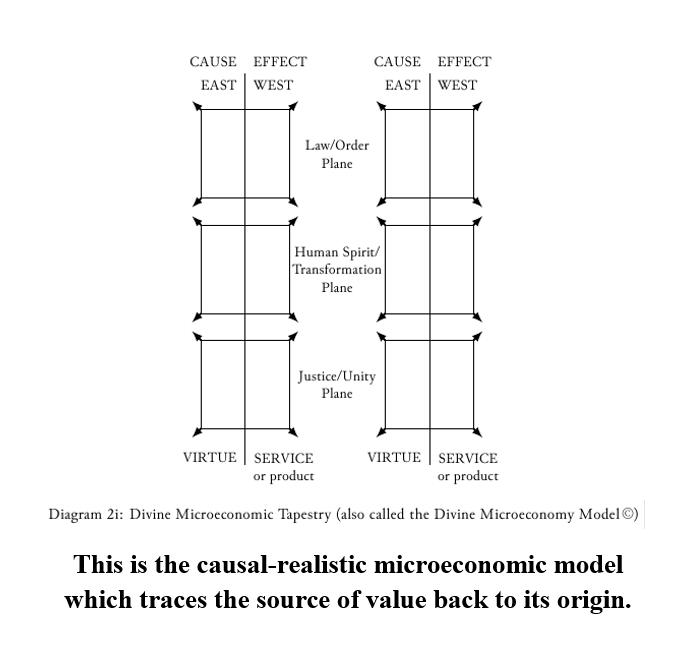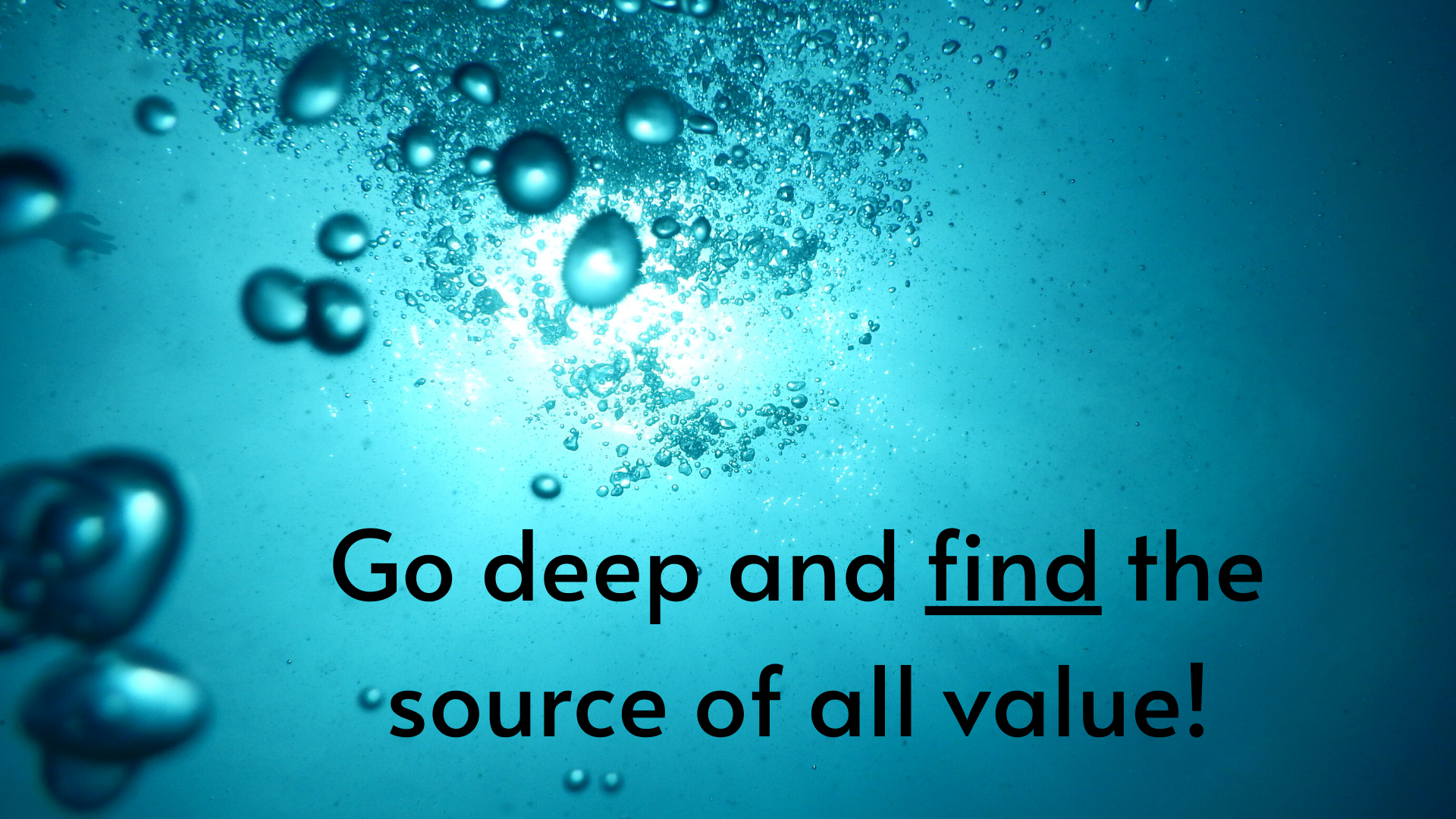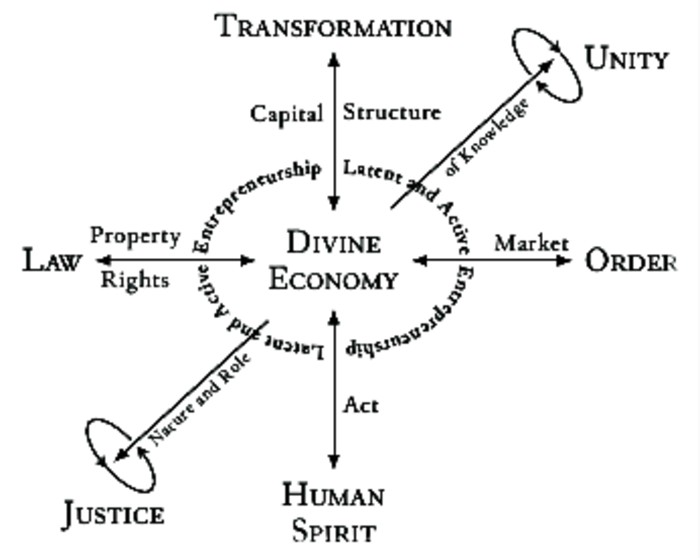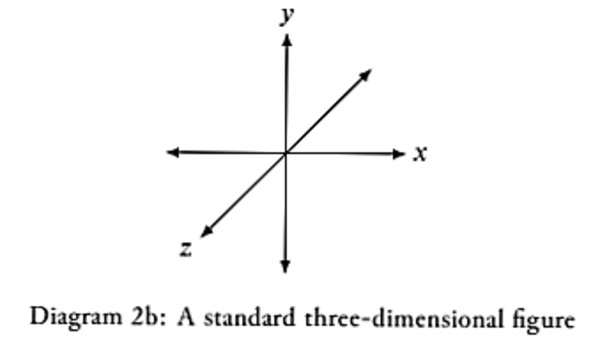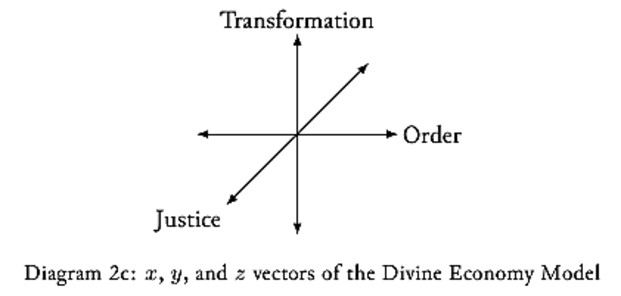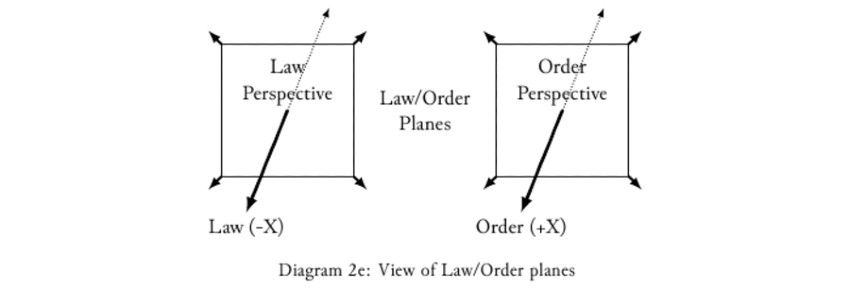Perhaps you clicked on the microeconomic model that you saw on the diagrams section of my home page.
HERE IS THE MICRO MODEL, AS IT FORMED, AND IN DETAIL
Divine Microeconomy Model ©
This will be a model building experience for you. You may have never had an opportunity before to proceed step by step in an economic model to reach a coherent end. Additionally remarkable, this will be your chance to see first hand how to build a bridge between science and religion. Take your time and enjoy the process.
To begin I need to extract the Divine Economy Model ©, Diagram 2f from Chapter Two in the book entitled MORE THAN LAISSEZ-FAIRE. Our starting point will be the same as Diagram 2f entitled “The Complete Divine Economy Model Independent of Time.”
Diagram 2a — The Complete Divine Economy Model Independent of Time
This is quite a complex and dynamic model in all of its applications but what we will take note of here, in particular, is that it is more than a two dimensional model. I now call your attention to the description of the model; notably when the model was transformed from the “Modus Operandi” stage to the “Driving Force of the Divine Economy Model” stage in the process of the unfoldment of the Divine Economy Model. It is clear from the following description that it is more than a two dimensional model: “The next modification of the divine economy model stretches the imagination a little by adding a depth dimension. This can be grasped fairly easily by imagining the modus operandi of the divine economy . . . as submerged in a bowl of water. The water that surrounds and supports the model represents latent and active entrepreneurship.”
A more traditionally geometric way to see how the divine economy model takes on a higher dimensional nature comes when there is the addition of the axis called “The Nature and Role of Knowledge.” You are probably familiar with three dimensional graphics which show what results from the addition of a ‘z’ axis to a two dimensional graphic with an ‘x’ and a ‘y’ axis.
Diagram 2b — A Standard Three Dimensional Figure
In this case we will assume that the “Nature and Role of Knowledge” axis is the ‘z’ axis and imagine again that the three dimensional model is submerged, immersed in a matrix of latent and active entrepreneurship.
We will now begin assessing the divine economy model from specific vantage points for the purpose of achieving the objective, which is to create the divine microeconomic model. The vantage points will be the end points of each of these principal vectors; x, y and z, looking toward the center of the model. The center of the model represents the equilibrating power which in this model is referred to as the ‘divine economy.’
Diagram 2c — X, Y, and Z Vectors of the Divine Economy Model
Looking toward the center from the vantage point of the end of one vector, opens a vista of a two dimensional plane defined by the other two vectors.
Diagram 2d — Vantage Point View of the Two Dimensional Plane
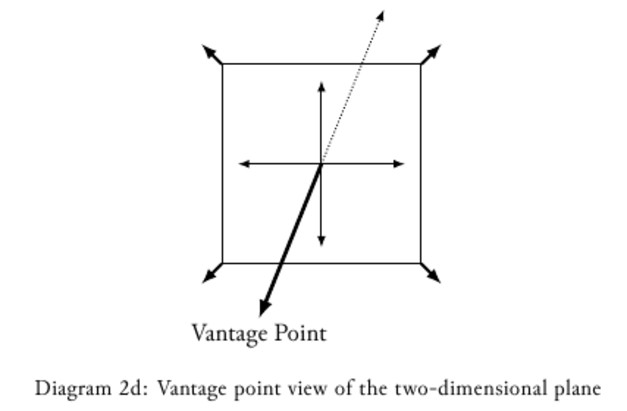
The best in their fields of expertise are those who know both the art and the science of their profession and apply it wisely. This tapestry concept for the two dimensional plane is a reminder that there is an art to the application of economic science.
I will now introduce the first stage – the Vantage Point Planes – of the divine microeconomy model. This first stage will show the model as a tapestry from a series of perspectives, as mentioned earlier; perspectives from the ends of each of the six vectors: -x, +x, -y, +y, -z, and +z.
The ‘x’ axis in the divine microeconomy model is represented by Law (-x) and Order (+x). The plane designation corresponds with the vantage point, so the Law/Order planes are as follows:
Diagram 2e — View of Law/Order Planes
The y axis in the divine microeconomy model is represented by Human Spirit (-y) and Transformation (+y). The Human Spirit/Transformation planes are as follows:
Diagram 2f — View of Human Spirit/Transformation Planes
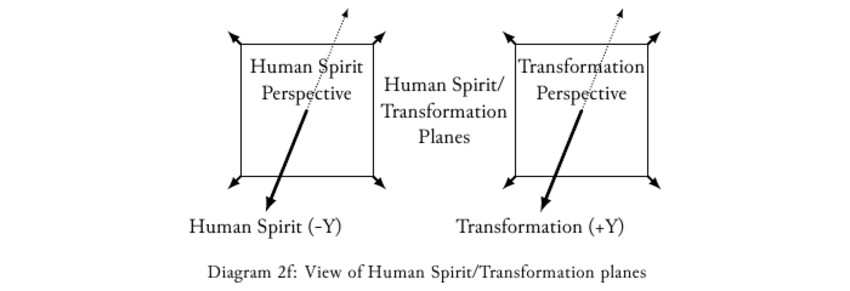
Diagram 2g — View of Justice/Unity Planes
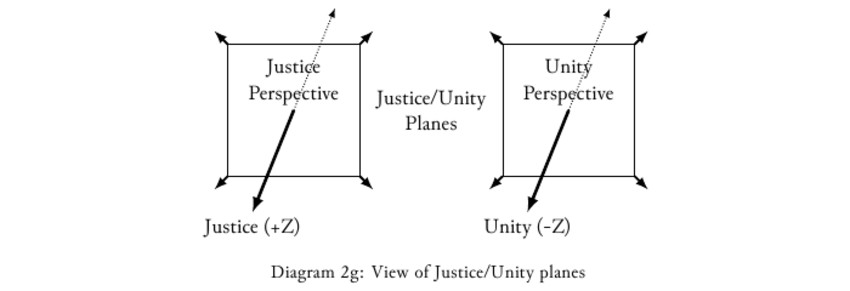
What is woven into the fabric of each of these tapestries? What is written upon these tablets? What is painted upon these canvases? The answer: human virtues!
The second stage of the divine microeconomy model, Virtues Akin to the Vantage Point, will be gone into more detail in Chapter Four. Suffice it to say that all these planes are the seats of the human virtues akin to the name of the vantage point. For example, those virtues which reflect the ideal of unity reside on the Unity Plane.
Diagram 2h — Virtues Akin to the Vantage Point
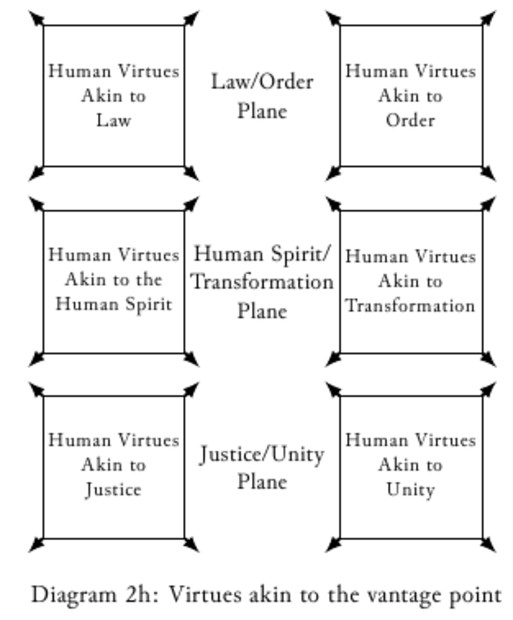
Stage three introduces cause and effect, and east and west, by adding the element of service to the element of virtue. The symbolism of east and west is compatible with the cause and effect, producing the following pattern: virtue leading to service (or product) which then may stimulate a new cycle. The idea that the acquisition of a virtue (cause) leads to service or a product (effect), which may inspire a desire to acquire more virtue(s) or service, fits the purpose of this model.
Diagram 2i — Divine Microeconomic Tapestry (also called the Divine Microeconomy Model)
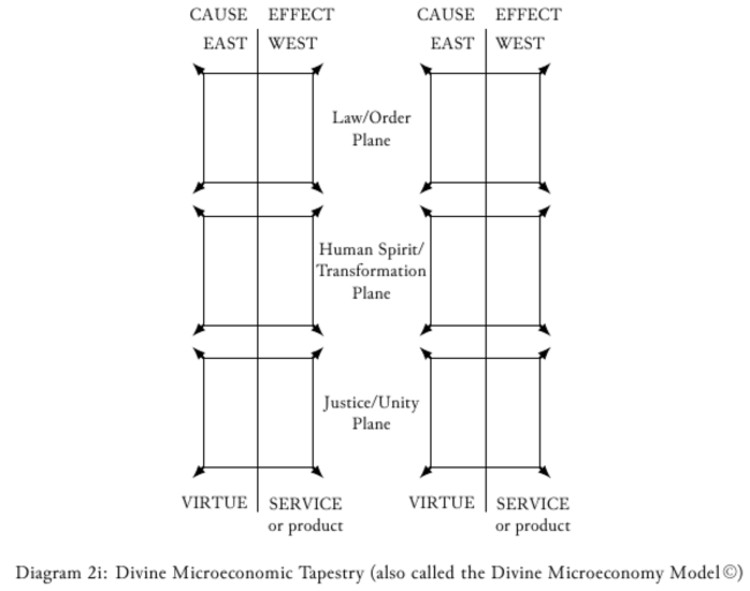
Go to Amazon to buy the book where the the whole theory surrounding this model is described in detail.



